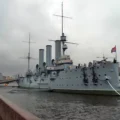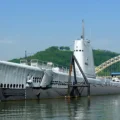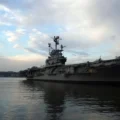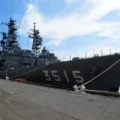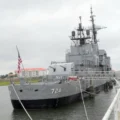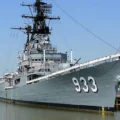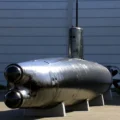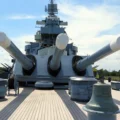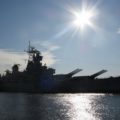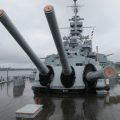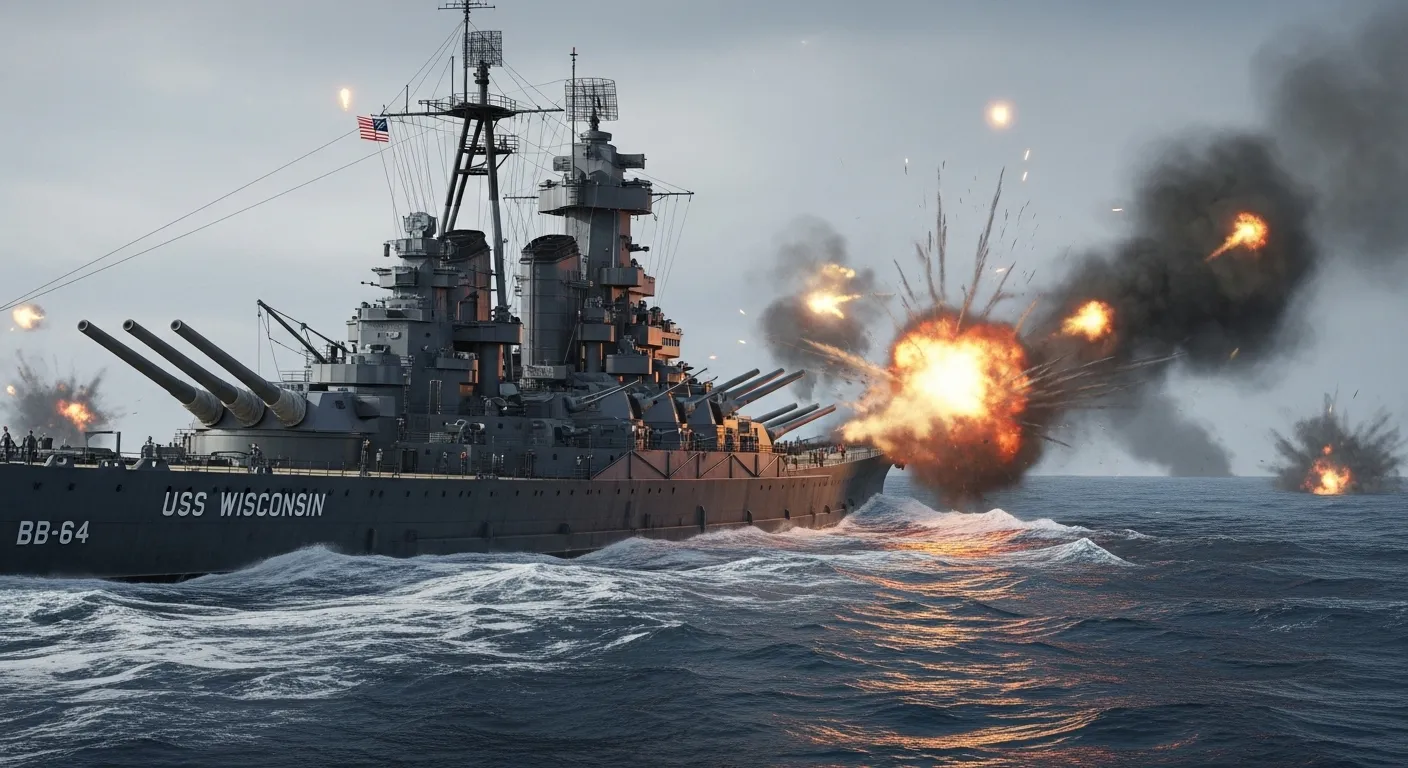
USS Wisconsin (BB-64) | |
|---|---|
| Land | Usa |
| Klasse und Typ | Iowa-Klasse |
| Gestartet | 7. Dezember 1943 |
| Heimathafen | Norfolk Virginia |
USS Wisconsin (BB-64) is an Iowa-class battleship, the second ship of the United States Navy to be named in honor of the U.S. state of Wisconsin. She was built at the Philadelphia Naval Shipyard in Philadelphia, Pennsylvania and launched on 7 December 1943 (the second anniversary of the Pearl Harbor raid), sponsored by the wife of Governor Walter Goodland of Wisconsin. During her career, Wisconsin served in the Pacific Theater of World War II, where she shelled Japanese fortifications and screened United States aircraft carriers as they conducted air raids against enemy positions. During the Korean War, Wisconsin shelled North Korean targets in support of United Nations and South Korean ground operations, after which she was decommissioned. She was reactivated on 1 August 1986; after a modernization program, she participated in Operation Desert Storm in January and February 1991.
Quelle: USS Wisconsin (BB-64) auf Wikipedia
| USS Wisconsin BB-64 Walk Around | |
|---|---|
| Fotograf | Wladimir Nikolajewitsch Jakubow |
| Lokalisierung | Unbekannter |
| Fotos | 444 |
Siehe auch:
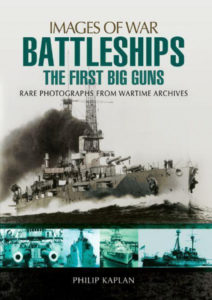
das USS Wisconsin (BB-64) is an Iowa-class battleship that served the United States Navy in World War II, the Korean War, and the Gulf War. It was the second ship to bear the name of the 30th state, and one of the largest and last battleships ever built by the US. It was launched on December 7, 1943, exactly two years after the attack on Pearl Harbor, and commissioned on April 16, 1944. It participated in several campaigns in the Pacific theater, bombarding Japanese positions and escorting aircraft carriers. After the war, it was decommissioned and placed in reserve, until it was reactivated for the Korean War in 1951. It provided naval gunfire support for UN and South Korean forces, earning a battle star for its service.
Sie wurde 1958 wieder außer Dienst gestellt und blieb drei Jahrzehnte lang still. 1988 wurde es im Rahmen des Marineexpansionsprogramms von Präsident Reagan modernisiert und wieder in Betrieb genommen. Es diente in den Operationen Desert Shield und Desert Storm und unterhielt eine bedeutende Präsenz im Persischen Golf, leistete wichtige Unterstützung für die Streitkräfte, die sich der Befreiung Kuwaits verschrieben hatten, und erhielt eine Navy Unit Commendation. Das mächtige Schlachtschiff erwies sich angesichts der Budgetkürzungen nach dem Golfkrieg als zu teuer für den Unterhalt und wurde schließlich 1991 zum letzten Mal außer Dienst gestellt. Es wurde der Stadt Norfolk, Virginia, gespendet, wo es zu einem Museumsschiff in Nauticus, einem maritimen Wissenschaftszentrum, wurde. Heute können Besucher das Deck auf eigene Faust erkunden oder an einer Führung teilnehmen, die sie in die Vergangenheit zurückversetzt, um dieses majestätische Schiff zu erleben, das während seiner Karriere fünf Kampfsterne verdient hat.
Aufrufe : 2335



